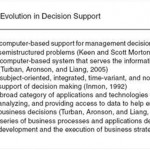Change management and the transitional process in organizations

The lack of vision in implementing organizational change seems to be one of the main causes for which organizational change fails. Lawler saw change management without vision as a reactionary response to resistance to change.
Acknowledging this, Buchanan and McCalman have introduced the practice of management through constant transition; this requires regular interventions from management in order to capitalize on the importance of organizational development for stable and structured growth. Also, having a management system which focuses on continual transition is considered, by modern standards, to be a premier requirement for achieving organizational performance.
In order for a company to nurture a development-driven culture, it needs to ensure the presence of the following factors:
- An availability for change (perceived as development) has to be present among the ranks of the organization’s personnel;
- The change process must rely on a well-established vision. An organization’s vision can be defined as the main goal and it needs to be in direct connection with the company’s general objectives;
- A transition from the current status to the desired status, known as the conversion level, which translates to the bridge between the need for change and the vision of the organization;
- The establishment of the transition process as a permanent cultural element, which solidifies the organization’s interest in promoting innovation and achieving performance.
Management processes and actions, focused on constant transition are the the most powerful elements within Change Management Theory, demonstrating results in multiple industry sectors and organizational archetypes. The consistent improvement of a company’s performance needs to rely on innovation, which can only be obtained by undergoing a cycle of steady and sustained shifts.
Therefore, organizational change (perceived as development) is seen as a must in order to reach further progress in today’s business world. Companies need to permanently expand and if they wish to ensure a smooth transition, an effective change management strategy needs to be deployed.

Also, perpetual growth requires leadership capabilities on behalf of a company’s managing staff, which need to be manifested in a structured and development-oriented manner. Leadership is thought to be the quintessential requirement for the successful implementation of a change & improvement process.
Kotter defines leadership as being the most important factor for implementing progression. Considering his eight-step theory for successful change, leadership is the only element directly influencing the successful transition to a superior step.
A transitional process – implicitly the actual change process referred to as development, relies heavily on leadership. This can be manifested in two different ways: through pulling and pushing; each of the two affect the transition process differently and can have contrasting results, depending on each organization’s system.
- The „push” method involves the passing of information without soliciting opinions from employees. Although this kind of approach has short term results, it is not consistent with an effective transitional process. A leadership „push” method is an autocratic management approach that cannot be considered as a sustainable solution for implementing development programs.
- The „pull” method has the tendency to reduce resistance to change from employees. From a leadership perspective, pull methods are considered to be desirable in long term transition processes, oriented on development. „Pull methods” generate win-win situations, and are considered as being customary of participative leaders who focus on people management. Pull leadership in a change scenario must focus on the contribution brought by the enterprise’s management on the changeover mechanism.
Considering the fact that constant shifts are inevitable nowadays, leadership can be seen as the key factor for enhancing business processes, deploying development programs and achieving superior performance standards in a fluctuating environment.

Tags: Management performance, Organizational Performance, Process Management






pest control services
| #
Very informative article. Much obliged.
Reply
vietnam visa australia
| #
I really enjoy the article post.Thanks Again. Keep writing.
Reply
himachal pradesh news today
| #
Very good article.Thanks Again. Cool.
Reply
c.ai
| #
Im grateful for the blog article.Much thanks again.
Reply
smash or pass
| #
Looking forward to reading more. Great blog.Thanks Again. Will read on…
Reply
blow dryer
| #
Really appreciate you sharing this blog article.Much thanks again. Much obliged.
Reply
橙新聞
| #
Say, you got a nice blog article.Really thank you! Much obliged.
Reply
instagram pro
| #
I really enjoy the article.Really looking forward to read more. Great.
Reply
talkie ai
| #
Enjoyed every bit of your post.Really looking forward to read more. Fantastic.
Reply
美国论文代写
| #
Looking forward to reading more. Great blog article.Really looking forward to read more.
Reply
ai porn chat
| #
Wow, great post.Thanks Again. Really Great.
Reply
nsfw ai
| #
Awesome article post.Much thanks again. Awesome.
Reply
エロ ai
| #
I loved your article post. Will read on…
Reply
Period underwear shorts
| #
I value the blog.Much thanks again.
Reply
HT Modern Black Coffee Table With
| #
Really enjoyed this article.Much thanks again. Cool.
Reply
home appliances repair service
| #
Im grateful for the article. Want more.
Reply
AC Repair Service in Palm City
| #
I really like and appreciate your article post. Much obliged.
Reply
Best ac system replacement in Palm City
| #
Very good article post.Thanks Again. Much obliged.
Reply
fire safety training quotes
| #
Great post. Cool.
Reply
utah hunter safety course
| #
Very informative article.Really thank you! Will read on…
Reply
dubai holiday packages uk
| #
This is one awesome blog article.Really thank you! Fantastic.
Reply
dubai honeymoon packages from mumbai
| #
Thanks a lot for the blog.Really looking forward to read more. Will read on…
Reply
arena plus live score
| #
Thank you ever so for you article post. Really Great.
Reply
motphim chill
| #
Wow, great blog. Awesome.
Reply
https://baixicans.com/
| #
Fantastic blog article.Really thank you!
Reply
英国论文代写
| #
Thank you ever so for you blog article.Really looking forward to read more.
Reply
GB WhatsApp
| #
Great, thanks for sharing this article post.Much thanks again.
Reply
Fouad WhatsApp
| #
Appreciate you sharing, great article post.Really looking forward to read more. Really Cool.
Reply
Descargar WhatsApp Plus
| #
I really liked your article post.Really thank you! Want more.
Reply
FM WhatsApp download
| #
I loved your blog.Much thanks again. Cool.
Reply
NSFW Generator AI
| #
A big thank you for your post.Really looking forward to read more. Really Great.
Reply
Anime Ai
| #
Say, you got a nice blog article.Really looking forward to read more. Much obliged.
Reply
today all cricket match
| #
Thanks for the blog article. Will read on…
Reply
Living Room End Table supplier in usa
| #
I really like and appreciate your blog article.Thanks Again. Really Great.
Reply
Best inmotion hosting reviews
| #
Great, thanks for sharing this blog article.Much thanks again.
Reply
dpboss kalyan result
| #
wow, awesome blog article.Much thanks again. Fantastic.
Reply
indian satta matta matka result
| #
Thanks a lot for the post. Want more.
Reply
medical science syllabus for upsc
| #
Thanks-a-mundo for the article post.Really thank you! Really Great.
Reply
volo car booking
| #
I cannot thank you enough for the blog article. Much obliged.
Reply
Best Tempo traveller maharaja hire in noida
| #
Very good post.Much thanks again. Awesome.
Reply
mobile app development company india
| #
Thanks so much for the article.Really thank you! Cool.
Reply
teen patti master game
| #
Awesome blog post.Much thanks again. Awesome.
Reply
china injection molding machine
| #
Im grateful for the article.Really looking forward to read more. Keep writing.
Reply
香港最強實力現金網
| #
A big thank you for your blog.Thanks Again. Will read on…
Reply
injection machine supplier
| #
Fantastic blog article.Much thanks again. Cool.
Reply
affordable custom shirts
| #
Major thankies for the blog.Really thank you! Great.
Reply
what is a touch point meeting
| #
Really enjoyed this article post.Thanks Again. Will read on…
Reply
monthly touch base
| #
I think this is a real great blog.Much thanks again. Awesome.
Reply
ai hentai chat
| #
Im obliged for the blog post.Thanks Again. Want more.
Reply
dirty talk ai
| #
Muchos Gracias for your post. Will read on…
Reply
Injection Machine manufacturer
| #
Thanks for the article.Much thanks again. Fantastic.
Reply
ai sex chat
| #
Im obliged for the blog article.Thanks Again. Want more.
Reply
character ai no filter
| #
I really enjoy the article.Much thanks again. Keep writing.
Reply
keeper ai test
| #
Fantastic article post. Want more.
Reply
keeper ai test
| #
I think this is a real great blog post.Much thanks again.
Reply
ai girfriend
| #
Thanks a lot for the blog.Really looking forward to read more. Keep writing.
Reply
Rizz AI
| #
I think this is a real great blog post.Much thanks again. Great.
Reply
character ai
| #
I value the blog post.Really thank you! Want more.
Reply
porn ai chat
| #
Wow, great blog.Thanks Again. Will read on…
Reply
porn ai chat
| #
Thanks again for the article post.Really thank you! Fantastic.
Reply
c.ai
| #
Thanks so much for the blog.Really looking forward to read more. Fantastic.
Reply
smash or pass game
| #
Major thankies for the blog post.Much thanks again. Awesome.
Reply
affordable custom shirts
| #
Very good blog post.Really thank you! Want more.
Reply
synthetic wig shampoo and conditioner
| #
This is one awesome blog post.Thanks Again. Really Cool.
Reply
human hair wigs melbourne
| #
wow, awesome post.Really thank you! Fantastic.
Reply
ragatha cosplay wig
| #
Awesome blog post.Really thank you!
Reply
crowd control barrier dimensions
| #
Im grateful for the post.Much thanks again. Really Cool.
Reply
slsmachinery
| #
I really like and appreciate your post.Really thank you!
Reply
Online cricket id
| #
I am so appreciative of you providing this wonderful knowledge on your weblog. When I share my website on social media, it will be incredibly helpful to me. I am grateful that you shared.
Reply
Online Betting Id
| #
I appreciate you sharing this wonderful knowledge on your weblog so much. There’s little doubt that I’ll use it to promote my website on social media. I appreciate that you shared.
Reply
cricket id
| #
I am so appreciative of you providing this wonderful knowledge on your weblog. When I share my website on social media, it will be incredibly helpful to me. I am grateful that you shared.
Reply
Best Cricket id Provider
| #
For providing this wonderful information on your blogs, I am really appreciative. When I post my website on social media, it will be incredibly helpful. Thank you for sharing.
Reply
best betting id
| #
We are really grateful that you have shared this wonderful knowledge on your blogs. Using it to assist promote my website on social media is something I will undoubtedly do. That you shared, I appreciate it.
Reply
betting ID
| #
For providing this wonderful information on your blogs, I am really appreciative. When I post my website on social media, it will be incredibly helpful. Thank you for sharing.
Reply
Online cricket id
| #
I really appreciate you supplying this wonderful knowledge on your website. Without a doubt, I’ll use it to promote my website on social media. Thank you for sharing.
Reply
Online Betting Id
| #
I am really appreciative of you providing this excellent information on your weblog. When I post my website on social media, it will be incredibly helpful to me. I am grateful that you shared.
Reply
cricket id
| #
I really appreciate that you are providing this excellent information on your weblog. I’ll find it quite helpful when I post links to my website on social media. Thank you for sharing.
Reply
SLS Machinery Co.,Ltd
| #
wow, awesome article. Really Cool.
Reply
优美之家
| #
wow, awesome blog post. Really Great.
Reply
优美之家
| #
Say, you got a nice article post.Thanks Again. Really Cool.
Reply
Spotify MOD
| #
A big thank you for your blog post.Really looking forward to read more. Will read on…
Reply
nsfw character ai
| #
Really informative post.
Reply
led light baseball display case
| #
This is one awesome blog post.Thanks Again. Much obliged.
Reply
huddles
| #
I think this is a real great article post.Thanks Again. Will read on…
Reply
香港現金網娛樂城
| #
Thank you for your article post.Much thanks again.
Reply
how to improve sleep with technology
| #
Major thankies for the blog article.Really thank you! Really Great.
Reply
smart sleep solutions for insomnia
| #
This is a great resource. Ill visit again.
Reply
Balenciaga Runner
| #
Really appreciate you sharing this blog post.Really looking forward to read more. Really Great.
Reply
pia proxy s5
| #
I am so grateful for your article post. Want more.
Reply
中文包telegram
| #
Thanks for the blog post.Really looking forward to read more.
Reply
telegram汉化版
| #
Thank you for your post.Really looking forward to read more. Keep writing.
Reply
cnc machining solutions
| #
Thanks for the blog article.Thanks Again. Want more.
Reply
circuit board prototype
| #
Thank you for your blog. Fantastic.
Reply
Jogo de roleta
| #
Awesome post.Really looking forward to read more. Really Cool.
Reply
Restaurant billing POS system
| #
Major thankies for the blog. Cool.
Reply
海角网
| #
Fantastic blog.Really looking forward to read more.
Reply
马尔代夫 旅游
| #
I think this is a real great blog post. Much obliged.
Reply
slsmachinery
| #
Thanks so much for the post.Really looking forward to read more. Cool.
Reply
SLS Machinery Co.,Ltd
| #
Really appreciate you sharing this article post.Much thanks again. Great.
Reply